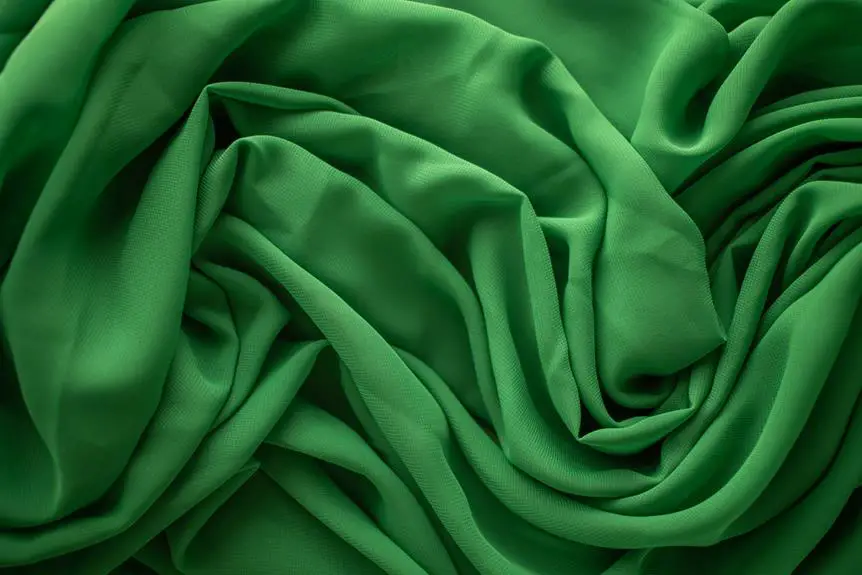Tired of dealing with fabric stains on your skin? Did you know that choosing the right fabrics can actually prevent this frustration?
By following these 5 simple methods, you can avoid the annoyance of fabric staining on your skin. From selecting skin-friendly materials to treating your clothes before wearing them, these tips will help you maintain a clean and stain-free appearance.
Whether you're a fashion enthusiast or simply want to improve your daily clothing experience, mastering these strategies will enhance your fabric-wearing routine.
So, let's dive into these effective ways to keep your skin free from unsightly fabric stains.
Key Takeaways
- Choose skin-friendly fabrics such as cotton or silk
- Apply non-comedogenic and fragrance-free barrier creams
- Pre-treat clothes with a stain-resistant spray
- Wash garments inside out to prevent dye transfer onto skin
Choose Skin-Friendly Fabrics
When choosing fabrics to prevent staining on your skin, opt for those that are made of natural fibers such as cotton or silk. Fabric sensitivity and allergen avoidance are crucial when it comes to maintaining the health of your skin. Natural fibers are gentle on the skin and allow it to breathe, reducing the risk of irritation and allergic reactions. These fabrics also absorb moisture, keeping your skin dry and less prone to staining.
Cotton, in particular, is a great choice for those with sensitive skin as it's hypoallergenic and soft. It allows for air circulation, which helps in keeping your skin cool and dry. Silk is another excellent option as it's smooth and luxurious, making it gentle on the skin. Additionally, silk contains natural proteins that can aid in skin health.
When shopping for clothing, check the fabric composition on the label to ensure that it predominantly consists of natural fibers. By selecting skin-friendly fabrics, you can minimize the risk of fabric staining and maintain the overall health of your skin.
Apply Barrier Creams
Consider applying a barrier cream to protect your skin from fabric staining. Barrier creams act as a protective layer between your skin and the fabric, preventing dyes and chemicals from causing stains or irritation. When choosing a barrier cream, opt for one that is non-comedogenic, fragrance-free, and specifically formulated for skin protection.
Here's a helpful table to guide you in selecting the right barrier cream:
| Feature | Description | Example |
|---|---|---|
| Non-Comedogenic | Doesn't clog pores | Oil-free moisturizer |
| Fragrance-Free | Minimizes skin irritation | Unscented lotion |
| Skin Protection | Shields skin from stains | Barrier cream with SPF |
Pre-Treat Your Clothes
Pre-treat your clothes by applying a stain-resistant spray before wearing them to create a protective barrier against fabric dyes and chemicals. This simple step can help prevent fabric staining on your skin and clothes.
Consider the following tips to effectively pre-treat your clothes:
- Choose high-quality fabric protectors to ensure maximum protection.
- Follow the manufacturer's instructions when applying the fabric protector for best results.
- Pay special attention to areas prone to staining, such as collars, cuffs, and hems.
- Reapply the fabric protector after washing your clothes to maintain its effectiveness.
- Use proper washing techniques, such as washing dark and light-colored clothes separately, to prevent fabric dyes from transferring onto your skin.
Wash Garments Inside Out
To prevent fabric staining on your skin, wash your garments inside out to minimize the risk of dye transfer onto your skin. This fabric care technique is especially effective for dark or brightly colored clothing items. When clothes are washed inside out, the friction between the fabric and the washing machine is reduced, which helps to prevent colors from fading and minimizes the likelihood of dye transferring onto your skin during wear.
Additionally, turning clothes inside out can help protect delicate fabrics and preserve prints, embellishments, and appliques.
When implementing this laundry technique, remember to fasten zippers, buttons, and hooks to prevent them from snagging or causing damage. It's also important to use a gentle detergent and wash similar colors together to avoid any potential color bleeding. Always follow the care instructions on the garment's label to ensure the best fabric care practices.
Opt for Colorfast Clothing
When selecting clothing to prevent fabric staining on your skin, ensure that you choose colorfast garments that won't bleed or transfer dye onto your skin during wear. Colorfastness is crucial in preventing fabric dyeing and potential skin reactions. To ensure the garments you choose are colorfast, consider the following:
- Fabric Testing: Look for clothing that has been tested for colorfastness to ensure that the dyes used won't bleed onto your skin.
- Quality Fabrics: Invest in high-quality fabrics that are less likely to bleed or transfer dye onto your skin, reducing the risk of skin reactions.
- Follow Care Instructions: Always follow the care instructions on the garment to maintain its colorfastness and prevent dye transfer onto your skin.
- Avoid Cheap Dyes: Be cautious of clothing with cheap dyes, as they're more likely to bleed and stain your skin.
- Choose Dark Colors Wisely: Dark-colored clothing is more likely to transfer dye onto your skin, so be mindful of the colorfastness when selecting dark garments.
Frequently Asked Questions
Are There Any Natural Remedies or DIY Solutions for Preventing Fabric Staining on Skin?
To prevent fabric staining on skin, try natural remedies and DIY solutions. Opt for skin-friendly clothing and consider using a barrier cream or applying a thin layer of unscented deodorant to create a protective barrier.
Can Certain Medications or Skincare Products Increase the Likelihood of Fabric Staining on Skin?
Certain medications and skincare products can increase the likelihood of fabric staining on your skin. Be mindful of skincare routines and medications that may cause allergic reactions or interact with fabric dye, leading to potential staining issues.
What Are Some Alternative Methods for Pre-Treating Clothes to Prevent Fabric Staining on Skin?
To prevent fabric staining on skin, start by fabric pre-treatment. Create a skin barrier with a layer of unscented lotion. Choose clothing dye that's less likely to transfer. Consider fabric sensitivity when selecting laundry detergent.
Are There Specific Laundry Detergents or Fabric Softeners That Can Help Prevent Fabric Staining on Skin?
To prevent fabric staining on skin, specific detergents and fabric softeners can help. Look for skin-friendly laundry products or try natural remedies and DIY solutions. These options can effectively prevent fabric staining on skin.
How Can Environmental Factors, Such as Humidity or Temperature, Impact Fabric Staining on Skin?
Environmental factors like humidity and temperature can impact fabric staining on your skin. Pollution can exacerbate this. To prevent staining, try using barrier creams or powders, and be mindful of clothing materials and colors.
- Tetron Fabric for Marine Applications: Durability and Use Cases - June 18, 2025
- Tetron Fabric for Outdoor Furniture: Weather Resistance and Care - June 18, 2025
- Tetron Fabric for Wall Coverings: Style and Application Tips - June 18, 2025





